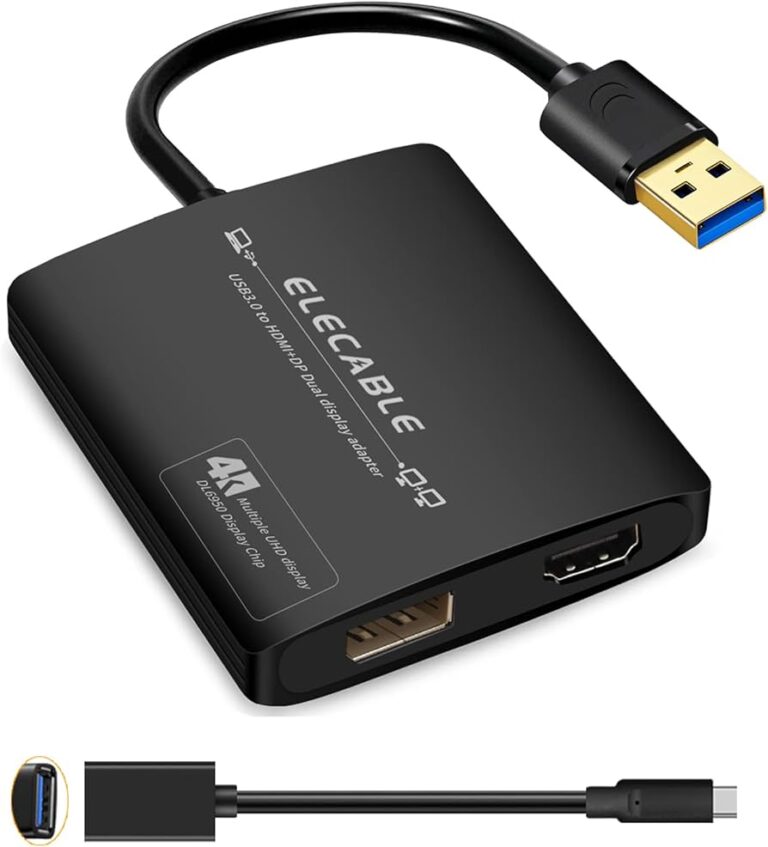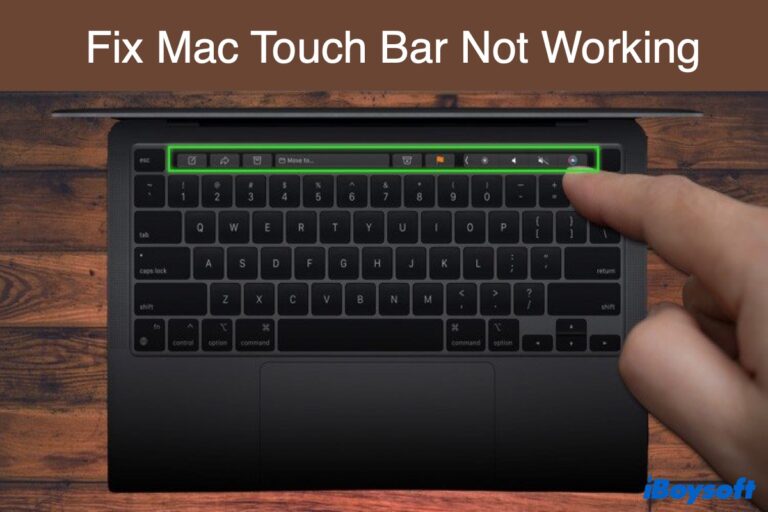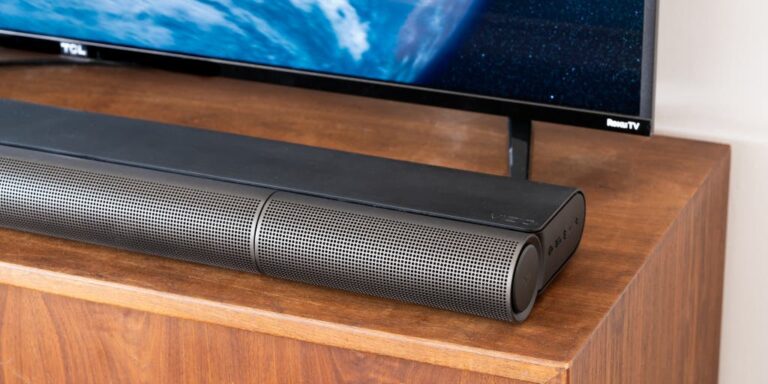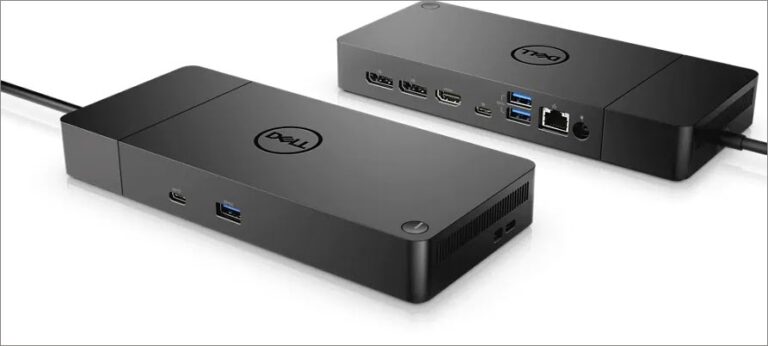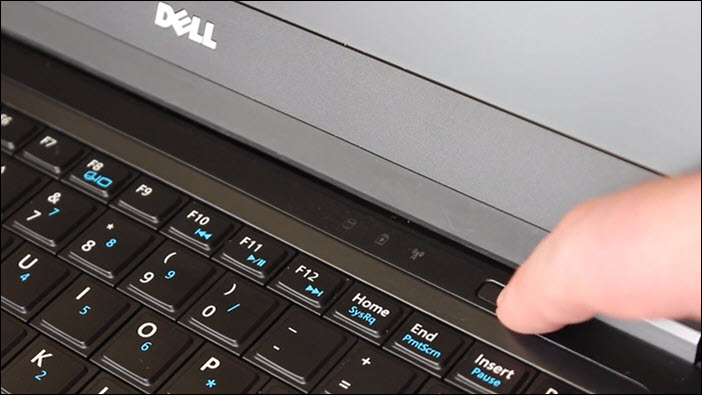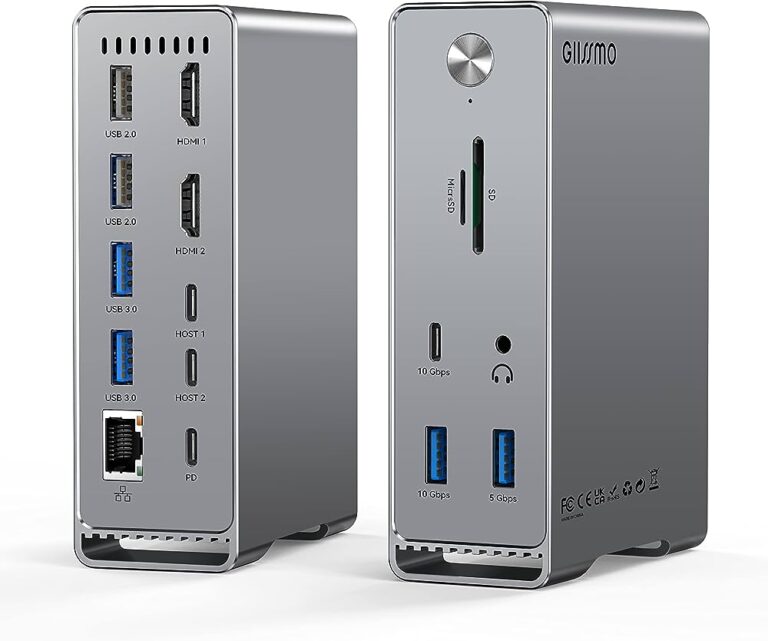Monitor Not Turning on After Installing New Ram: Troubleshooting Solutions
If your monitor is not turning on after installing new RAM, it could be due to the RAM not being properly recognized by your motherboard or the RAM being incompatible with your motherboard. To resolve this issue, try resetting your computer and make sure that the RAM is fully inserted and seated correctly in the socket.
If the problem persists, it may be necessary to consult the motherboard’s specifications to ensure compatibility or seek technical assistance.
Ensuring Correct Ram Installation
Upgrading your computer’s RAM is a great way to enhance its performance and capabilities. However, sometimes, after installing new RAM, your monitor may not turn on, leaving you wondering what went wrong. In such cases, it is crucial to ensure that the RAM is correctly installed to avoid any compatibility or seating issues that may be causing the problem. In this section, we will discuss three essential steps to ensure correct RAM installation.
Verify Ram Compatibility With The Motherboard
The first step in ensuring correct RAM installation is to verify its compatibility with your motherboard. Not all RAM modules are compatible with every motherboard, so it’s important to check the manufacturer’s specifications and ensure that the RAM you have purchased is supported by your motherboard. Consult your motherboard’s manual or visit the manufacturer’s website to find the compatible RAM types, speeds, and capacities for your specific model.
Check Ram Seating And Installation Procedures
Improperly seated RAM can cause various issues, including the monitor not turning on. To eliminate this possibility, carefully inspect the RAM modules and make sure they are securely inserted into the motherboard’s memory slots. Refer to your motherboard’s manual for the correct installation procedures, including the order of slot usage and any specific guidelines for dual-channel configurations. Take note of any locking mechanisms or retention clips that need to be engaged to ensure proper seating.
Look For Physical Damage On The Ram Sticks Or Slots
Physical damage to the RAM sticks or slots can prevent the proper functioning of the RAM and result in the monitor not turning on. Inspect the RAM sticks for any visible signs of damage, such as bent or broken pins. Similarly, check the memory slots on the motherboard for any debris or foreign objects that may hinder proper contact between the RAM and the motherboard. Ensure that there is no dust or oxidation build-up that could affect the electrical connection.
By following these three crucial steps of verifying RAM compatibility, checking seating and installation procedures, and inspecting for physical damage, you can increase the chances of successful RAM installation and resolve the issue of the monitor not turning on after installing new RAM.
Power Cycle And Bios Reset
If you recently upgraded your RAM and now your monitor is not turning on, don’t panic! There are a few troubleshooting steps you can try to resolve this issue. One of the most effective methods is power cycling your computer and performing a BIOS reset. Follow the instructions below to regain control of your PC and get your monitor working again.
Instructions For Power Cycling Your Computer
- First, shut down your computer by pressing and holding the power button until it turns off completely.
- After the computer is powered off, unplug it from the power source.
- Next, press and hold the power button for about 10 seconds to discharge any residual electricity.
- While the computer is unplugged, also disconnect any peripherals such as external hard drives, printers, and USB devices.
- After a few minutes, plug the computer back into the power source and turn it on.
- If your monitor turns on and displays the expected content, you have successfully power cycled your computer.
- However, if the monitor still doesn’t turn on, proceed to the next step.
Steps For Cmos Reset To Recognize New Ram
- Start by shutting down your computer again, as you did for the power cycle.
- Once the computer is turned off, locate the CMOS battery on your motherboard. It is a small silver disc-shaped battery.
- Carefully remove the CMOS battery from its slot. It may be held in place by a clip or simply pop out when gently pushed.
- After removing the battery, press and hold the power button for about 30 seconds to release any remaining energy.
- While the battery is out, press and hold the power button for another 30 seconds to ensure a complete discharge.
- Now, reinsert the CMOS battery back into its slot, making sure it is properly aligned.
- Finally, plug your computer back into the power source and turn it on.
- If all goes well, your computer should recognize and utilize the new RAM, and your monitor will display the expected content.
By power cycling your computer and performing a BIOS reset, you have effectively cleared any lingering issues and ensured that your computer can properly recognize and utilize the new RAM. If you follow these steps carefully, you should be able to resolve the problem of your monitor not turning on after installing new RAM.
Remember, if you are not comfortable performing these steps yourself or if the issue persists, it’s always best to seek assistance from a professional technician.
Graphics Connection And Outputs
When it comes to troubleshooting a monitor that won’t turn on after installing new RAM, one of the first aspects you should examine is the graphics connection and outputs. The graphics connection and outputs are crucial for transmitting the visual signals from the computer to the monitor. In this section, we will explore some key areas to investigate and resolve the issue.
Examine Video Cable And Port Integrity
The video cable and port integrity should be the primary consideration when encountering monitor display issues. A loose or faulty video cable connection can lead to a lack of signal transmission between the computer and the monitor. Therefore, it is essential to ensure that the video cable is securely connected to both the GPU port on your computer and the corresponding port on the monitor.
To examine the video cable and port integrity, follow these steps:
- Check if the video cable is securely plugged into the GPU port on your computer.
- Verify that the other end of the video cable is firmly connected to the appropriate port on the monitor.
- If using HDMI, DisplayPort, or DVI cables, confirm that all pins are intact and undamaged.
Remember, it’s crucial to use the correct video cable type that matches the available ports on both your computer and monitor.
Assess Discrete Vs. Onboard Graphics Scenarios
In some cases, the issue may arise due to conflicts between the discrete graphics card and the onboard graphics. Modern computers often come equipped with both options, allowing users to switch between them as per their requirements. If your monitor fails to turn on after installing new RAM, it’s crucial to assess whether the computer is correctly using the intended graphics processing unit (GPU).
To assess the discrete vs. onboard graphics scenarios, consider the following:
- Access the BIOS or UEFI settings of your computer by restarting it and pressing the designated key (such as Del or F2) during startup.
- Inside the BIOS/UEFI settings, navigate to the graphics settings or display options.
- Check and select the desired graphics device (discrete or onboard) as the primary display device.
- Save and exit the BIOS/UEFI settings, allowing the computer to restart and apply the changes.
This assessment ensures that the computer prioritizes the correct graphics output and may resolve the issue of the monitor not turning on.
Troubleshoot With Alternative Cables Or Monitors
If the previous steps did not resolve the issue, it is recommended to troubleshoot with alternative cables or monitors to isolate the problem. This process helps identify whether the problem lies with the original cable, monitor, or other hardware components.
| Troubleshooting steps: |
|---|
| 1. Replace the video cable with a known working cable of the same type. |
| 2. Connect your computer to a different monitor that is functioning properly. |
| 3. Test the original monitor with another computer or device to verify if it displays correctly. |
By following these troubleshooting steps, you can determine whether the issue lies with the video cable, monitor, or other hardware components, allowing you to take appropriate actions for resolution.
Booting With Minimum Hardware
If you recently installed new RAM on your computer and are facing the issue of the monitor not turning on, don’t panic just yet. This is a relatively common problem, and there are a few troubleshooting steps you can take to get your PC up and running again. One effective method is to boot your computer with the minimum necessary hardware. By stripping down your system to only the essential components, you can isolate the issue and identify whether it is related to the new RAM or something else.
Strip Down To Essential Components Method
The first step in troubleshooting your monitor not turning on after installing new RAM is to strip down your computer to the essential components. Here’s how you can do it:
- Power off your computer and unplug it from the power source.
- Open the computer case and remove any unnecessary peripherals such as external hard drives, printers, or USB devices.
- Disconnect all non-essential cables, including the network cable, mouse, and keyboard.
- Remove any additional RAM sticks that you installed along with the new RAM, leaving only the original RAM stick in place.
- Remove any extra expansion cards, such as graphics cards or sound cards.
- Plug the power cable back in and turn on your computer.
- Check if your monitor turns on and if you can see any display.
If your monitor turns on and displays after following these steps, it suggests that the issue lies with one of the components you removed. You can then gradually add back the components one by one and test if the monitor continues to function properly.
Test Each Ram Stick Individually
If your monitor still doesn’t turn on after booting with the minimum hardware, you can try testing each RAM stick individually. Here’s how:
- Power off your computer and unplug it from the power source.
- Open the computer case and locate the RAM sticks.
- Remove all the RAM sticks from your computer.
- Insert one RAM stick into the first RAM slot.
- Connect the power cable back in and turn on your computer.
- Check if the monitor turns on and displays.
- If the monitor works, repeat the process with each RAM stick, inserting them one at a time and testing the monitor after each insertion.
This method helps identify if any of the new RAM sticks are faulty or incompatible with your system. If you find that one of the RAM sticks causes the monitor to not turn on, it is likely defective and should be replaced.
Swap To Old Ram To Isolate The Issue
If you’ve tried the previous methods and your monitor still doesn’t turn on, it could indicate that the issue lies with the new RAM itself. To isolate the problem, you can swap the new RAM back to the old RAM sticks and check if the monitor works with the old RAM. Here’s how:
- Power off your computer and unplug it from the power source.
- Open the computer case and locate the RAM sticks.
- Remove the new RAM sticks and reinstall the old RAM sticks.
- Connect the power cable back in and turn on your computer.
- Check if the monitor turns on and displays.
If the monitor works fine with the old RAM, it suggests that there may be compatibility or other issues with the new RAM sticks. You may need to consult your computer’s manual or contact the manufacturer for further assistance or consider getting replacement RAM sticks.
Remember, troubleshooting hardware issues like this can be a process of trial and error. By following these steps, you can narrow down the problem and find a solution that gets your monitor turning on properly again.
Indicators For Requiring Expert Assistance
If your monitor is not turning on after installing new RAM, there could be several reasons. It could be due to loose connections, incompatible RAM, or faulty hardware. Make sure the RAM is installed properly, check the motherboard’s specifications for compatibility, and consider seeking expert help if the issue persists.
When you install new RAM in your computer and the monitor fails to turn on, it can be quite frustrating. While this issue may be caused by various factors, it is important to recognize when it is necessary to seek expert assistance. Persistent issues after comprehensive troubleshooting, the risk factors of DIY solutions on hardware integrity, and leveraging warranties and technical support options are key indicators that it’s time to consult a professional.Persistent Issues After Comprehensive Troubleshooting
If you have followed all the troubleshooting steps found online or provided by the manufacturer and the monitor still refuses to turn on after installing new RAM, it is advisable to seek expert assistance. These persistent issues could be indicative of underlying hardware problems that require professional guidance. Attempting to resolve the issue on your own may result in further complications or damage to your system.
Risk Factors Of Diy Solutions On Hardware Integrity
Although there are plenty of do-it-yourself solutions available online for troubleshooting monitor issues after RAM installation, it is important to consider the risk factors associated with these DIY solutions. Mishandling the hardware components or attempting complex procedures without proper knowledge can lead to irreversible damage to your computer system. Seeking professional assistance ensures the integrity of your hardware and minimizes the risks involved.
Leveraging Warranties And Technical Support Options
If you have recently installed new RAM and your monitor refuses to turn on, it is crucial to check if your hardware components are under warranty. Many manufacturers offer technical support and warranty services that can help you resolve the issue without incurring additional costs. By utilizing these warranties and technical support options, you can ensure that a trained professional addresses the problem, providing you with peace of mind and a reliable solution.
In conclusion, when you encounter the issue of your monitor not turning on after installing new RAM, it is essential to pay attention to the indicators that suggest expert assistance is required. Persistent issues after comprehensive troubleshooting, the risk factors associated with DIY solutions on hardware integrity, and leveraging warranties and technical support options are crucial factors to consider. Seeking professional assistance not only ensures the proper resolution of the problem but also protects your hardware and minimizes potential risks.

Credit: www.hp.com
Frequently Asked Questions For Monitor Not Turning On After Installing New Ram
Why Won T My Monitor Turn On After Changing Ram?
If your monitor won’t turn on after changing RAM, try these steps: 1. Remove and reseat the RAM to ensure it is properly installed. 2. Reset the computer to see if that resolves the issue. 3. Check if the new RAM is compatible with your computer’s motherboard.
4. Verify that the monitor cable is securely connected to the GPU port. 5. If none of these steps work, seek further assistance from a professional.
Why Is My Screen Black After Installing New Ram?
If your screen is black after installing new RAM, it may be due to incompatible RAM. Verify that the new RAM is compatible with your computer’s motherboard.
Can Ram Issue Cause No Display?
Yes, faulty RAM can cause a no display issue on a computer.
Why Is My Desktop Not Turning On After Ram Upgrade?
If your desktop is not turning on after a RAM upgrade, check if the RAM is properly installed and seated in the socket. Ensure it is compatible with your motherboard. If the issue persists, try resetting the computer or removing and reinserting the RAM.
Conclusion
Ensure everything is connected properly. If the issue still persists, it could be due to incompatible RAM or a faulty motherboard. It’s crucial to verify the compatibility of the new RAM with the motherboard specifications. If necessary, consult with an expert or refer to reliable online forums for further troubleshooting steps.
Remember to take precautionary measures such as grounding yourself and following proper installation procedures to prevent any damage. By following these steps, you can hopefully resolve the issue and get your monitor to turn on after installing new RAM.

